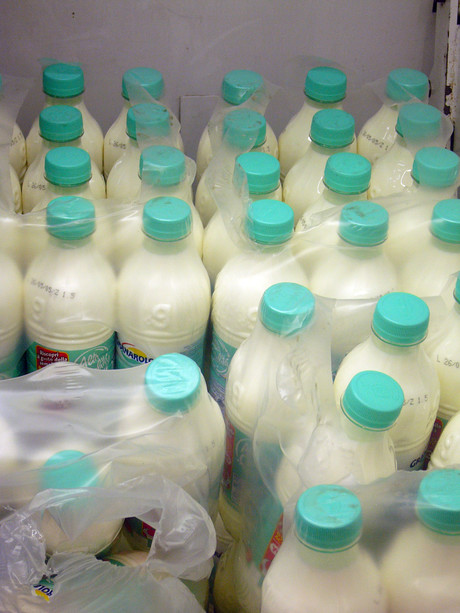Lighting, packaging and milk flavour

Fresh milk is supposed to taste ‘sweet’ and ‘rich’ but sometimes consumers use terms like like ‘cardboard’, ‘stale’ and ‘painty’. Now it seems that these negative descriptors could be a result of fluorescent lighting-induced flavour changes in the milk.
However, a simple solution may be at hand as these flavour changes do not occur when the milk is exposed to LED rather than fluorescent lighting systems. So, not only do the LED lights that are being installed in milk display cases reduce energy bills they also help the milk to taste better.
Milk consumption has been decreasing for several decades, and it is feasible that the lighting used in retail display cases that change the taste of milk may be one of the factors for this decline.
Riboflavin oxidises when it is exposed to fluorescent lights, not only causing the taste of the milk to alter but also reducing the nutritional content.

Virginia Tech researchers, led by Susan Duncan, a professor of food science and technology at the Virginia Tech College of Agriculture and Life Sciences, found that when milk is stored in the traditional translucent HDPE jugs, these oxidation reactions can take place in as little as two hours. When light-blocking pigments in HDPE or plastic PET containers were used, the flavour wasn’t changed as dramatically and consumers thought the milk tasted fresh.
Opaque milk packaging that protects riboflavin and other nutrients from lighting also helped to deliver a fresh, sweet, rich taste.
Duncan conducted a series of tests at the Virginia Tech Sensory Evaluation Laboratory that showed the new LED lights leave milk with a more satisfactory taste that consumers prefer over milk that has been exposed to fluorescent lights.
Duncan said more work still needs to be done on packaging to protect flavour profiles even further. Though improved packaging costs more than the traditional jugs, Duncan said the cost is worth it to maintain the best flavour of milk.
Duncan’s findings were recently published in the Journal of Dairy Science.
Australian bushfood could extend shelf life of meat
Kakadu plum is showing promise as a chemical-free alternative for meat preservation due to its...
Specialised compressed air for the food industry
Compressed air is a key utility supporting the food packaging and food processing industries in...
Mars steams ahead with renewable technology for pet food process
Mars Petcare's home-grown sustainability venture Green Steam allows its Wodonga factory to...












